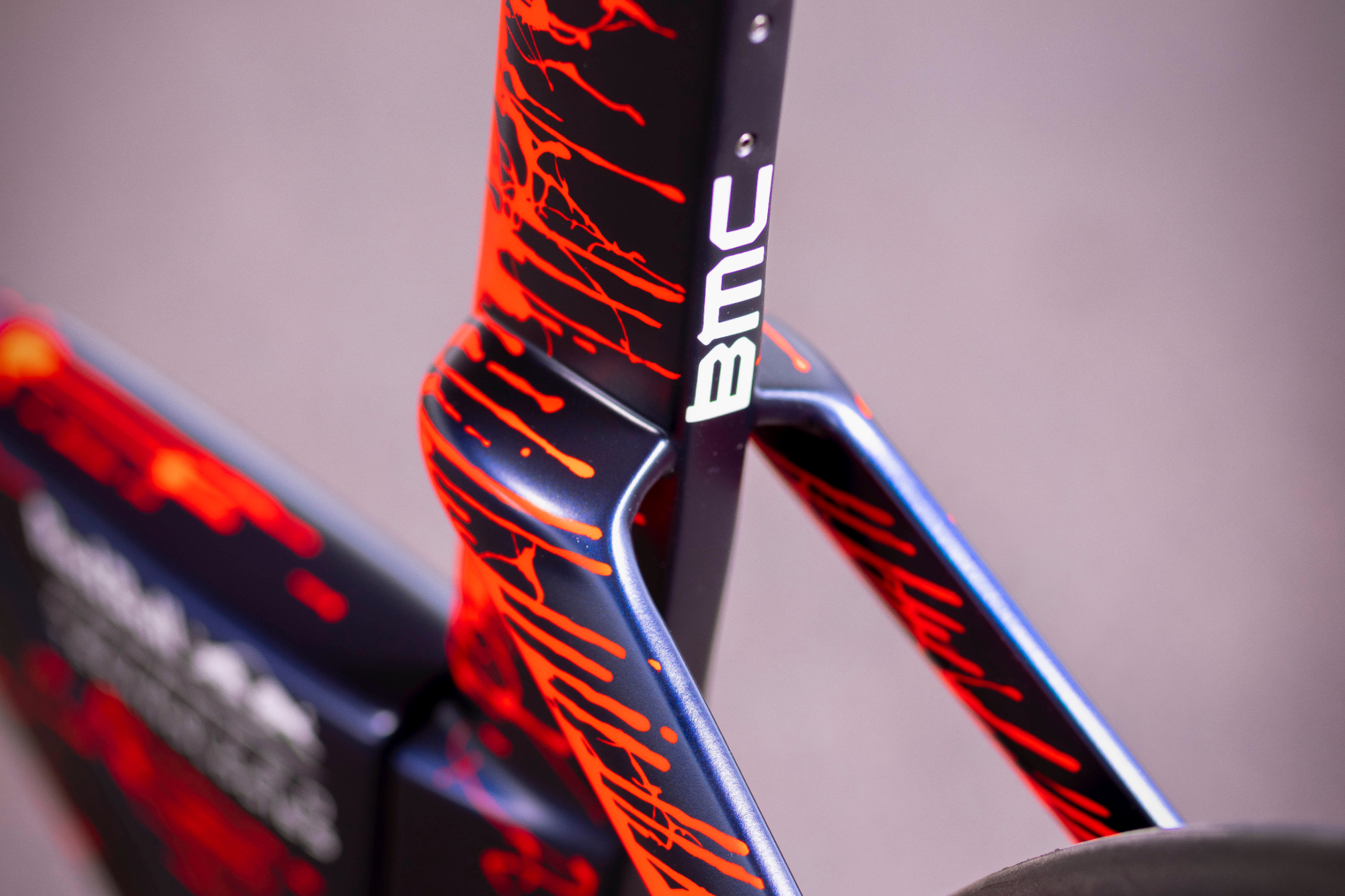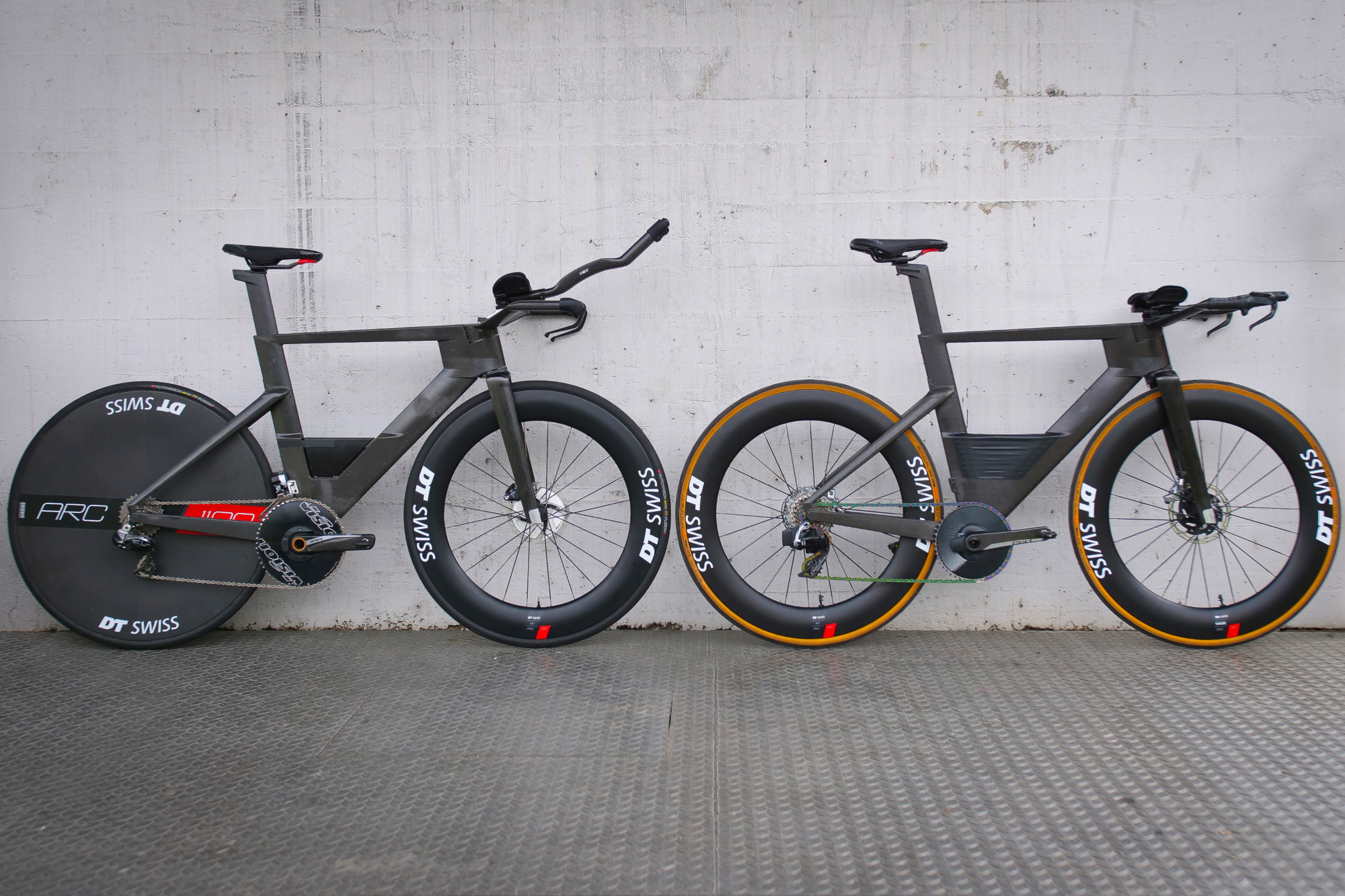‘World’s fastest bike’ ambition from F1's Red Bull Advanced Technologies and BMC
In the search for ever greater gains, Formula 1 tech is becoming increasingly common in cycling


Swiss bike brand, BMC, has collaborated with the F1's Red Bull Advanced Technologies in an attempt to produce the world’s fastest bike.
The partnership started in 2018 with the aim of using the tools developed to boost performance in Formula One to enhance the design and development of performance bikes.
BMC took advantage of Red Bull Advanced Technologies’ extensive simulation and modelling capacity to inform decisions on the optimisation of “speed, power and ride quality.”

Stefan Christ, Head of R&D and BMC Switzerland explained: “Simulating not only the vehicle performance, but the entire performance environment, offers huge opportunities in the collaboration and finally makes BMC athletes even faster. Building the prototypes in our very own Impec Lab here in Grenchen, Switzerland helped us to be fast in development but also realising exactly our vision of the bike.”
Even with their data driven approach and heavy emphasis on quantitative performance, BMC has kept considerations on the ride quality and feel close in mind.
Brand ambassador and multi Tour de France stage winner, Fabian Cancellara, was involved “at every stage of the development” to provide feedback through the prototyping and final construction.

Cancellara said: “Two worlds from different sports have come together to create something cycling has never seen before. It has been fascinating to be involved in this project from its early stages, to continually test the athlete and machine interface.
The latest race content, interviews, features, reviews and expert buying guides, direct to your inbox!
“Being part of the development of a cutting-edge bike, employing some radical principles and being given the chance to influence its performance from a rider perspective has been amazing. The finished prototype is incredible, and I look forward to what’s next.”

Andy Damerum, Red Bull Advanced Technologies Commercial Development Officer, added: “We started out with the ambition to design the fastest bike in the world. We’re incredibly proud of what we have achieved with BMC. We took our Formula One methodologies in aerodynamics and CFD (computational fluid dynamics) and applied it to bike design, resulting in a bike that we believe has the potential to be a game changer.”
Analysis
These are bold claims from Red Bull Advanced Technologies and BMC, but it would have been nice if a bit more of the data substantiating them were shared – at least some wind tunnel comparisons against some of the best time trial bikes currently available.
It seems that the first public test of the bike will be at the 2021 Ironman World Championship at St George in Utah (to be held on 7th May 2022) when it’s ridden by Red Bull Athlete and BMC Pro Triathlon Team Member Patrik Nilsson.
However, it is quite notable that there is no extension over the rear wheel as we’ve seen on dedicated triathlon bikes like the new Felt IA 2.0. Plus, that deep section storage box around the bottom bracket looks to be removable – perhaps so as to comply with the 3:1 rule that’s doesn’t apply in in triathlon.

It suggests that the collaboration may have stopped short at aiming to produce the "world’s fastest race bike” and instead opting for the “world’s fastest UCI-legal race bike”, potentially putting Nilsson at a disadvantage against more uncompromisingly optimised tri bikes.
But with that said, the Utah course does look to be notably hilly, with 2,248m of elevation gain compared to just 1,731 for the iconic Kona course (7,374 ft. vs 5,678 ft.). There’s also a major climb with gradients of 12 per cent at around the 120km / 75mi mark, ominously known as “The Wall”.
So perhaps the slimmer tubes and (presumably) lighter weight could prove a better balance for the demands of the race.
Either way, the bike does look quite distinctive with that flattened crown of the fork mimicking the slender joins of the seat stays to the seat post at the rear. With rider position being so important to the aero performance of the complete system, it’s good to see that the cockpit is designed to offer a more modern “high-hands” position, as well as the classic 90 degree bend at the elbows.

Finally, is this a sign of road bikes to come, or are they just having a laugh throwing a few bits together?
The stack of spacers under the stem is understandable as it doesn’t look like there’d be much clearance between the stem bolts and the face of the top tube – but does it really need such a sharp positive rise? That’s a pretty shallow drop between saddle and bar – some gravel bikes have a greater differential.
Plus, that’s quite an ensemble of components. You don't typically see an FC-6800 Ultegra crankset paired with 11-speed SRAM Red – and especially not in conjunction with a Campagnolo rear disc rotor. It’s certainly a very unique bike.

After winning the 2019 National Single-Speed Cross-Country Mountain Biking Championships and claiming the plushie unicorn (true story), Stefan swapped the flat-bars for drop-bars and has never looked back.
Since then, he’s earnt his 2ⁿᵈ cat racing licence in his first season racing as a third, completed the South Downs Double in under 20 hours and Everested in under 12.
But his favourite rides are multiday bikepacking trips, with all the huge amount of cycling tech and long days spent exploring new roads and trails - as well as histories and cultures. Most recently, he’s spent two weeks riding from Budapest into the mountains of Slovakia.
Height: 177cm
Weight: 67–69kg